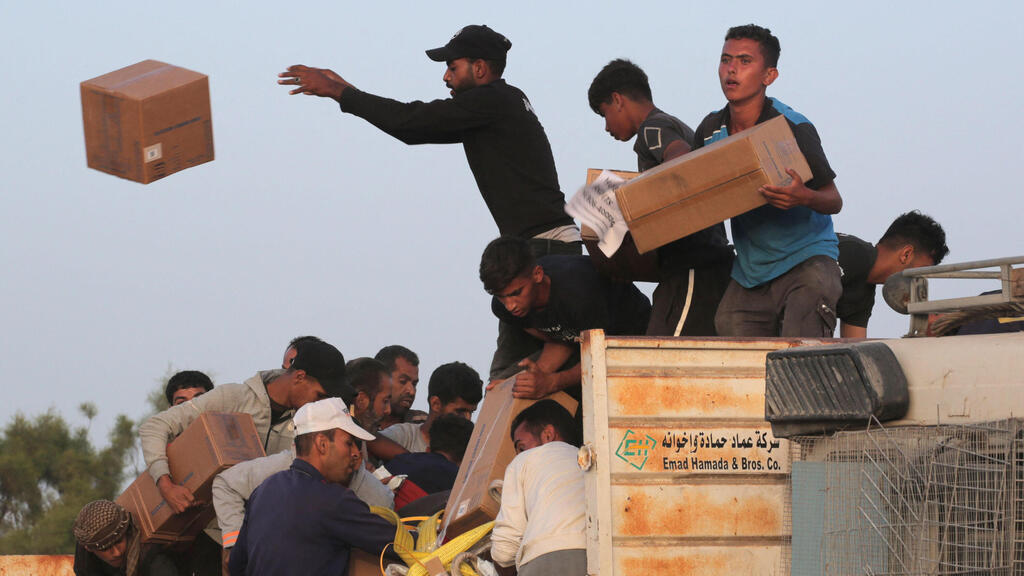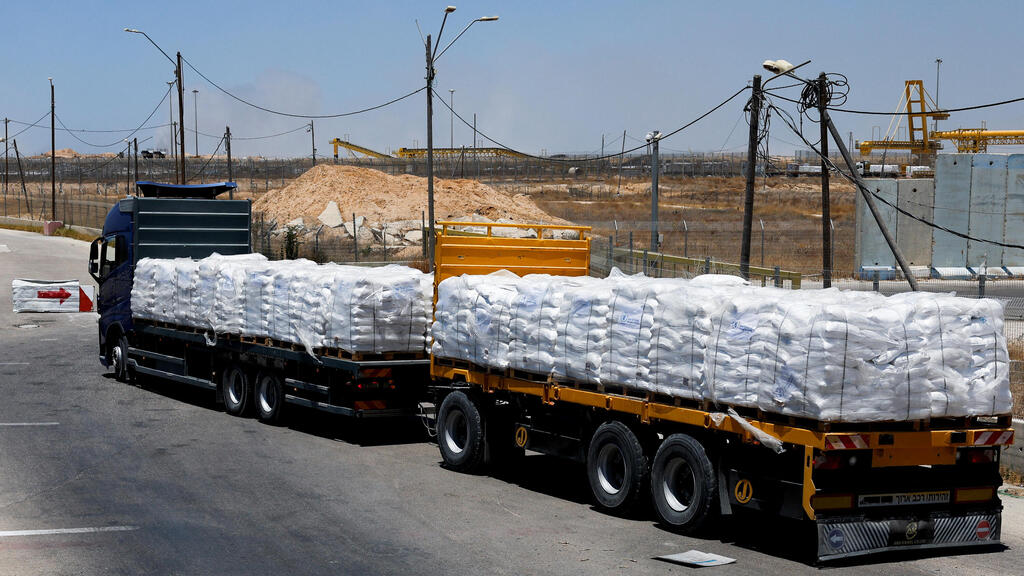Israeli officials from the Coordination of Government Activities in the Territories (COGAT), led by Maj. Gen. Ghasan Alyan, present the extent of aid being delivered to the Gaza Strip in daily reports distributed to government offices and other bodies around the world.
However, the international community, especially the United Nations and UNRWA - the Palestinian refugee relief agency, report the amount of aid is often significantly lower than the figures presented by Israel, leading to accusations of dishonesty and delays in aid delivery.
According to findings presented by UNRWA and the UN, the amount of aid counted by the organizations since the outbreak of the war and until June 5 totals 26,684 aid trucks entering Gaza. COGAT's records show 34,199 trucks.
An in-depth investigation conducted by the COGAT's Humanitarian Information Center, headed by Lt. Col. (res.) Or Elrom, reveals the reasons behind the data discrepancies and significant differences regarding the extent of aid entering Gaza.
The document indicates the main reason for the data gaps is the UN and UNRWA’s flawed data collection methods. Until October 6, the office responsible for the issue on behalf of the UN was the Office for the Coordination of Humanitarian Affairs (OCHA), which relied mainly on Palestinian Authority personnel for data collection from the Kerem Shalom and Rafah border crossings.
Since the start of the war, data collection has been placed on UNRWA, which, according to the UN decision, leads aid distribution and manages tracking and registration. However, as the aid increased, UNRWA struggled to collect the data. And UNRWA records only what enters from Kerem Shalom and Rafah.
The Erez crossing isn’t included in its records, although aid from the UN World Food Program enters via that crossing as well. Aid also enters via the U.S. Army’s temporary port and airdrops, but these don’t appear in the UN’s data. This is because UNRWA's registration officer isn’t present there, and UNRWA only reports what it distributes itself. The bottom line is the international community relies on incomplete information.
The month of May serves as a good example of the data gaps. COGAT counts all the aid trucks being transferred to Gaza. These often include hundreds of trucks waiting for collection by UN aid agencies on the Gazan side of the aid routes.
These trucks are included in the count while they wait for collection and distribution by the international community. In May, COGAT reported 6,359 trucks, but the UN only collected and distributed aid from 1,479 trucks – about a quarter of the trucks Israel sent in. Therefore, the international community accused Israel of not delivering enough aid that month.
Israel claims UNRWA is doing this in order to depict Israel as an entity starving Gazans. The world maintains the agency's status and ignores aid entering through other UN agencies, which isn’t counted in the international body’s reports.
"If UNRWA's logistics officer saw a convoy from the UAE, he would count it," a COGAT official said. "He wouldn’t count those he didn’t see. There’s an officer at Kerem Shalom who only records data when he’s physically present."






